But where do these skeletons? How to recognize the museum attendants, what or who ate this dinozavroskelet or can someone ate them? For answers to these questions, I went to the Far East, in the city of Blagoveshchensk, where Russia is the largest dinosaur locality. It was here, in the fossil laboratory of the Institute of Geology and Nature of the Far Eastern Branch of the Russian Academy of Sciences, told me and showed how one found in the forest of bones and body parts get the very huge skeletons that we can see in many museums around the country.  2. Entrance into the kingdom of paleontologists. From the very first meters doubt where you were, no - everywhere along the corridor are strange convolution of old newspapers and the lands in which veiled huge bone. This "fresh" part of the dinosaurs, which scientists have to work soon.  3. Amur Oblast in Russia is considered the largest pieces of dinosaur fossils located in Russia. Open it was not so long ago - in the beginning of the last century. Over time based on the location was formed paleontological laboratory, then Institute and Museum of Paleontology. On the territory of the Annunciation and Kundurskogo localities were found unique finds - a three-meter hind limb young amurozavra, dental bone duckbilled herbivorous dinosaurs, tail, neck and trunk vertebrae, ribs and shlemogolovyh amurozavra olorotitana, Flathead kerberozavra, zauropodnogo dinosaur - arharavii and other rare even on a global scale fragments. Oloritatana skeleton, a replica of which is the pride of the museum (pictured) is considered the most complete dinosaur skeleton found in the territory of Russia. The first part of the skeletons were discovered in 1999 during construction of the Chita-Khabarovsk highway. 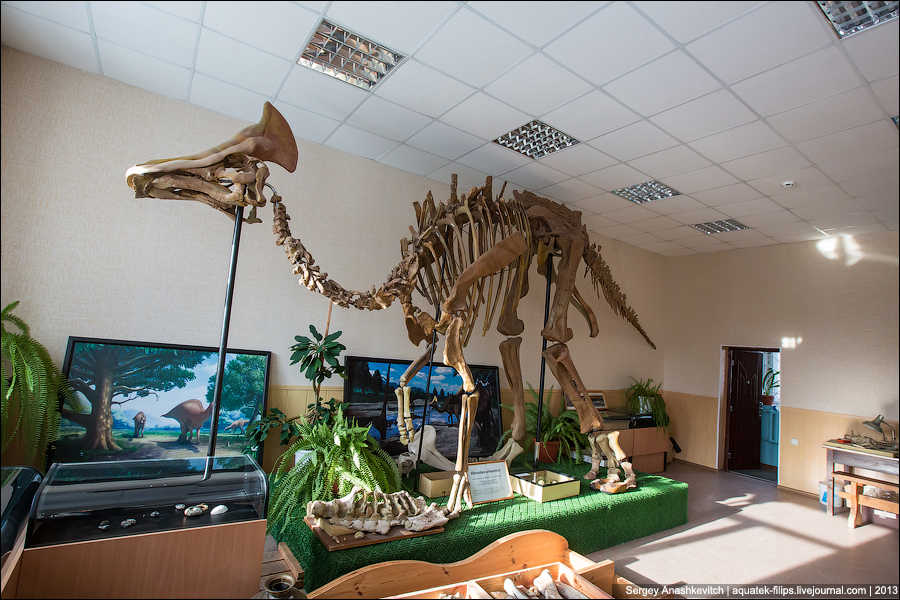 4. This is the most extreme part of the skeleton - the caudal vertebrae. It was their first in the natural junction, highway builders found in a heap of soil. Workers could not imagine that we found a real treasure trove for scientists. I must say that fragments of skeletons in the natural junction are rare and are of particular value for paleontologists because allow to obtain a more accurate picture of the animal. Excavations of this skeleton were large-scale, international scale and took took three field seasons - 1999, 2000 and 2001. In the first field season managed to get fragments of the skeleton to the pelvis, in the second - full body and the third - the neck with a skull  5. Finding skull scientists believe just incredible luck because skull allows 100% accurate to refer to a particular skeleton found described species or to open a new form.  6. Skeletons that we see in museums are replicas and originals directly bones stored in the collections and laboratories. This is due to the fact that for the construction of the skeleton, it is necessary to connect the fragments, drill them, glue, etc. But first, scientists can not afford to do so with valuable material, and secondly, very often it is very fragile and simply will not sustain all these operations, "construction" of the skeleton for exhibition. It's no wonder we have seen immediately upon entering the lab these strange cocoons. These cocoons are doing right at the site, in order, first, carefully and without damage to extract the portion of the soil, and secondly, to provide its transportation, and thirdly - temporary storage prior to restoration and research.  7. Close fragment dinosaur spine in its natural articulation, recently found on the whereabouts of the Annunciation, which is located just in the transport cocoon. According to scientists, during excavations there is always a high risk of irrevocable destruction findings, if not properly removed. Bones are often rotted and can crumble right in the hands. Therefore, when finding another bone fragment or skeleton, its very carefully freed from the top, as far as possible from the soil particles, then the task to fix and remove them. There are several ways - cover bones and sometimes impregnated with special laminating composition, then gently draped newspapers, and after fill or plaster, or, as in the photo, with foam.  8. After hardening fixing composition, fragment dig around and removed. Then it was packed in boxes, shuffle straw and transported to the laboratory. Here in this form bones and fragments come from the excavation site.  9. The next step is to release the bones from the cocoon and fixing soil residues  10. If the bone is composed of several pieces of glued together, and the bones themselves coated with a special adhesive that they do not obkrashivalis  11. Workplace restorer. Now here are working on a fragment of the pelvis  12. Often bones come here like this. Sometimes it is enough to identify their exact identity  13. Bolotsky Ivan - he almost 15 years ago was directly involved in the extraction of the most complete dinosaur skeleton Russian. This man is a true devotee with a passion and love telling about the reality of their lives - work with fossils in expeditions and laboratory.  14. Surprisingly, as he talks about every interesting fragments found in a given year. For example, this carnivorous dinosaur tooth found near the victim's bone in the body which he pierced many thousands of years ago. 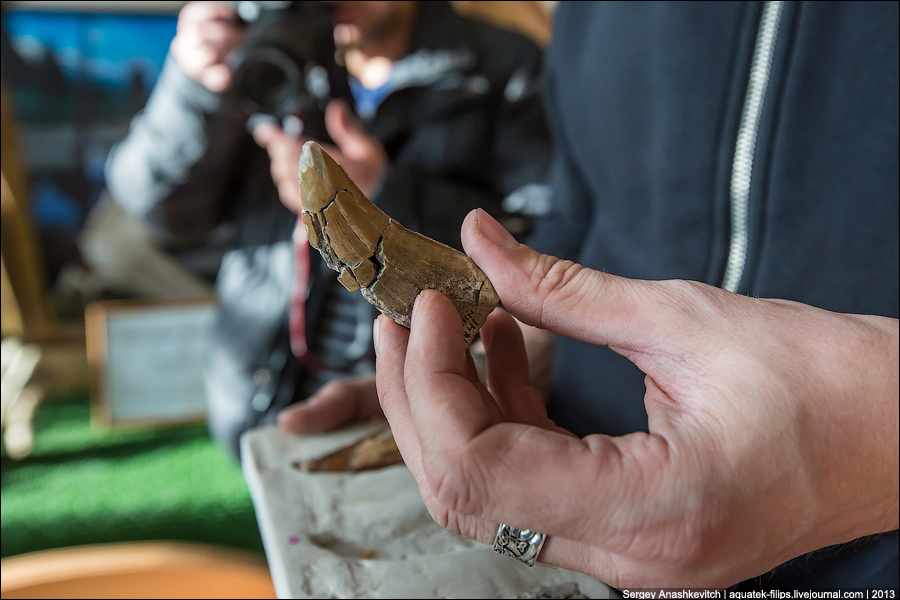 15. Once extracted from the bones location, transported to the laboratory and cleaned of soil, they are identified, determine the status and cataloged.  16. Cataloging is subject to all the fragments, including the bone portion  17. If the bones belong to the same skeleton, they put in special boxes. Then, when the extraction of the entire skeleton is over (and sometimes it takes a few seasons of archaeological) of them will try to form a full or partial skeleton. Missing bones usually modeled 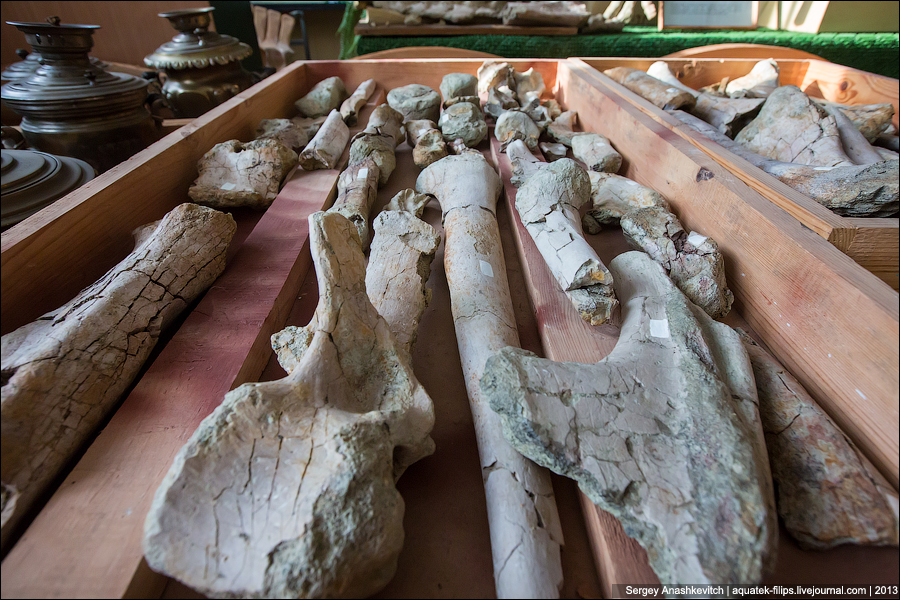 18. One of the skeletons in the unassembled 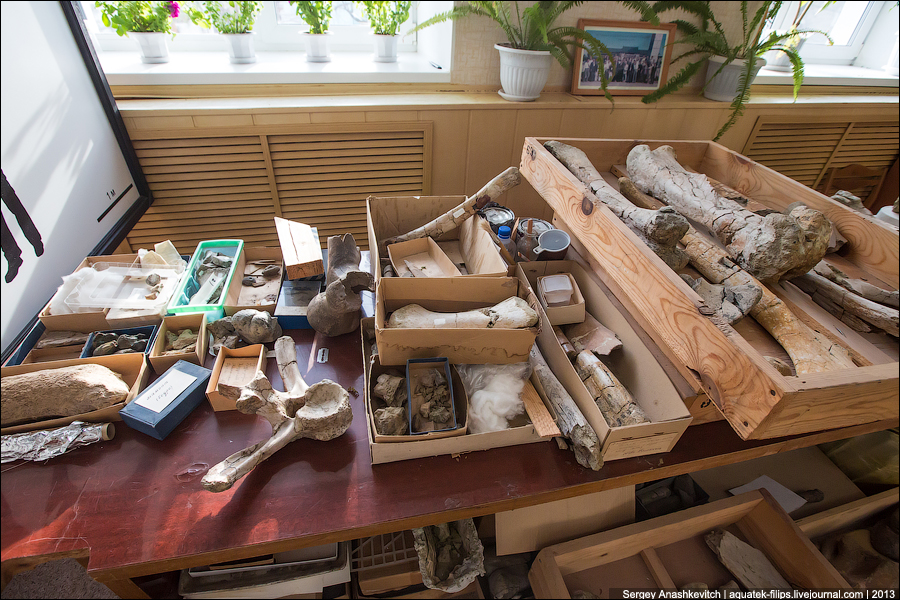 19. Stored here mammoth thigh. Rather, its a small part)  20. And next - vertebra  21. Containers with glutinous structures by which fixed parts of the bones and cover them outside to safety 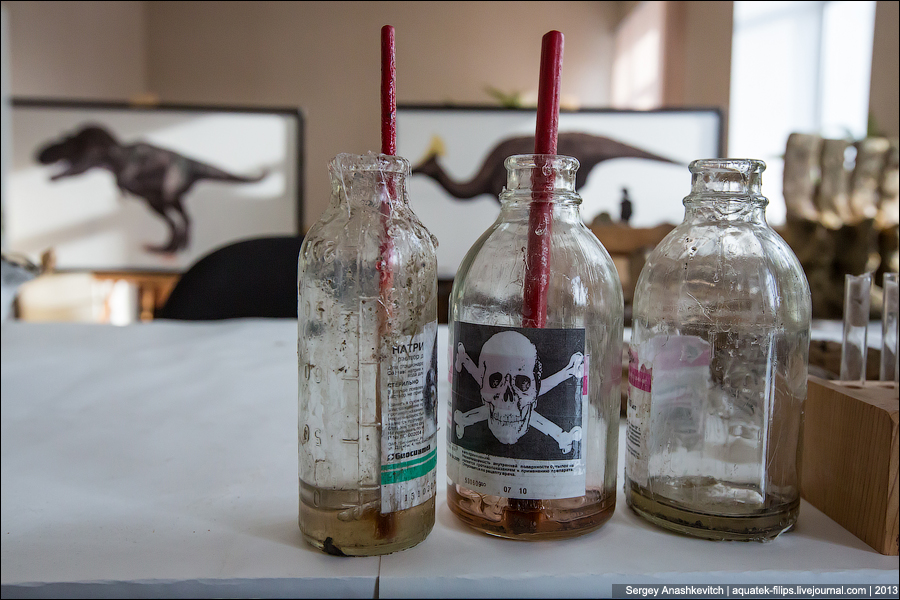 22. "Designer", from which in a few days will make solid piece  24. Final stage of work with a great fragments skeleton in their preparation, which is then removed with accurate sizes, and sometimes for the manufacturing of molds of plastic replica. Copies needed for museum expositions, and for researchers themselves to study. After all, as I said above, these bones of skeletons nobody collects fear of their destruction 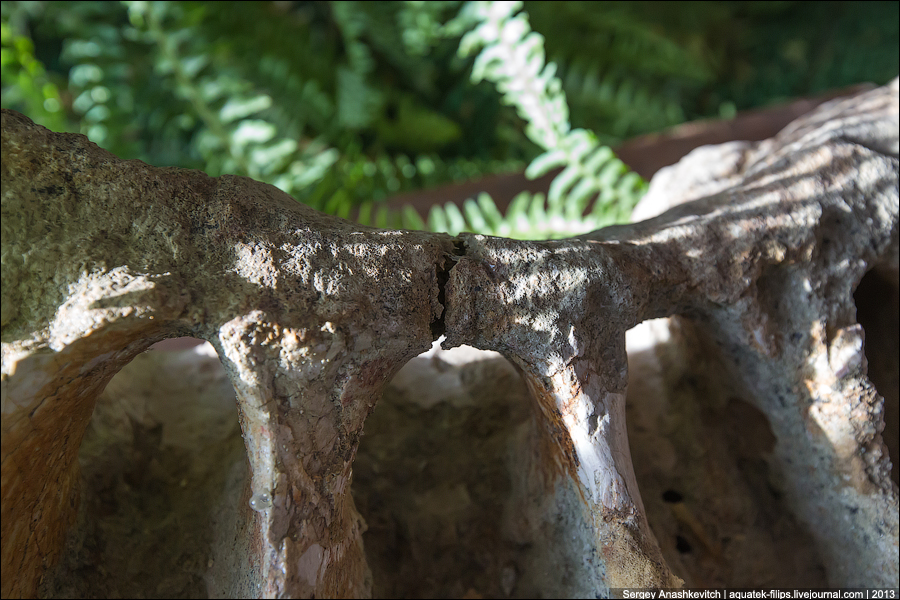 25. To present fragments of plastic applied already started, gradually forming a skeleton for full exposure. 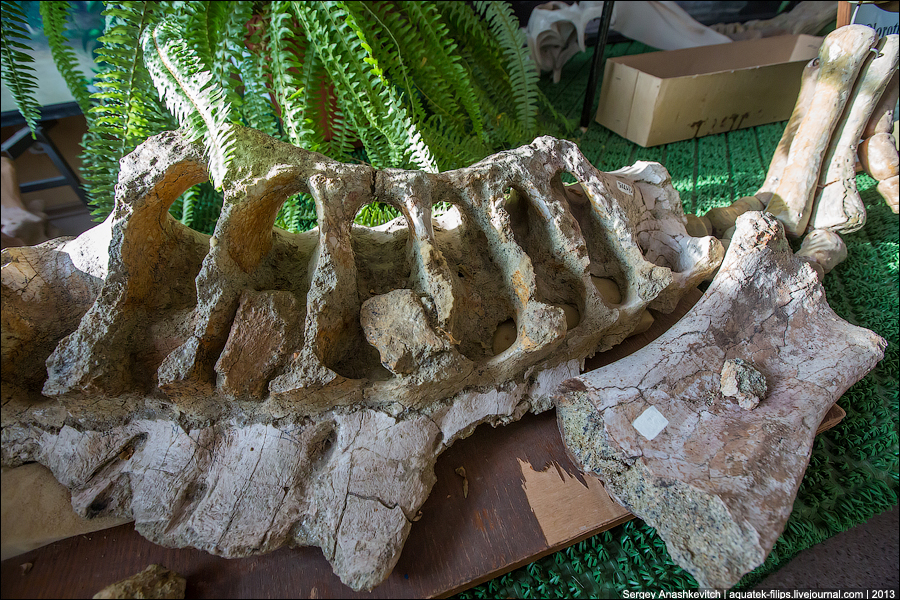 26. And after some time with the exact plastic copies will pull off the blanket and thousands of people will be able to witness the fruits of many months of work scientists paleontologists ... 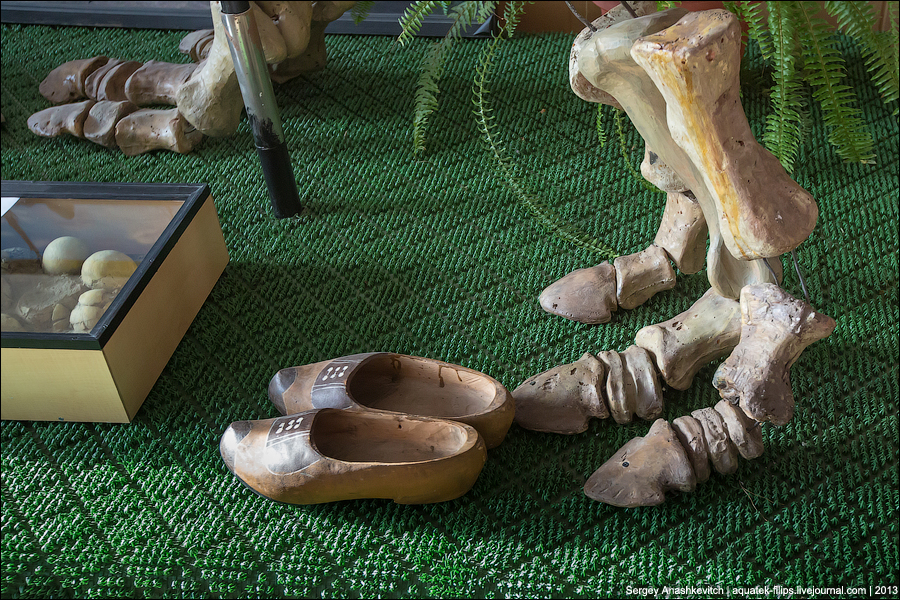
|

ADVERTISEMENT